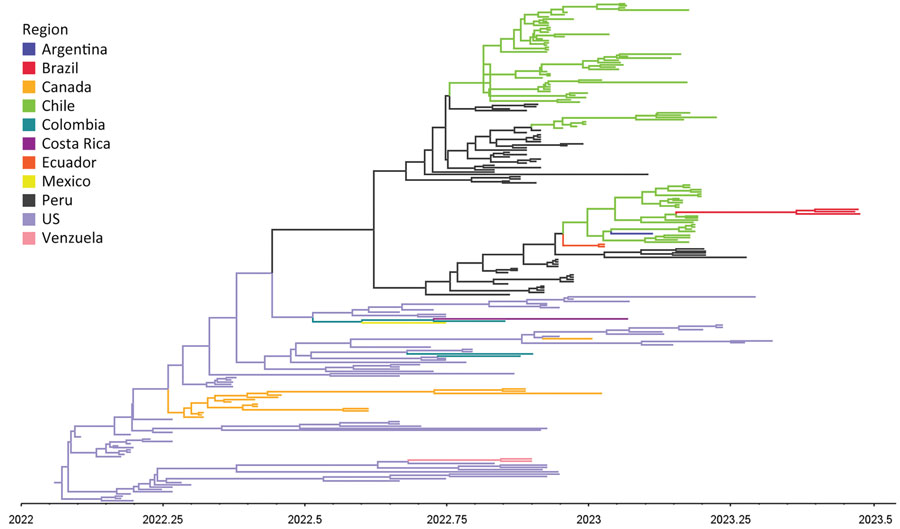Volume 30, Number 3—March 2024
Research Letter
Incursion of Highly Pathogenic Avian Influenza A(H5N1) Clade 2.3.4.4b Virus, Brazil, 2023
Figure

Figure. Maximum clade credibility phylogenetic tree of hemagglutinin gene based on discrete trait analysis of geographic location of wild bird carcasses identified as harboring highly pathogenic avian influenza A(H5N1) clade 2.3.4.4b virus, Brazil, 2023. The time scale is shown on the horizontal axis. Each branch is colored according to geographic region.
1These authors contributed equally to this article.
Page created: January 24, 2024
Page updated: February 22, 2024
Page reviewed: February 22, 2024
The conclusions, findings, and opinions expressed by authors contributing to this journal do not necessarily reflect the official position of the U.S. Department of Health and Human Services, the Public Health Service, the Centers for Disease Control and Prevention, or the authors' affiliated institutions. Use of trade names is for identification only and does not imply endorsement by any of the groups named above.